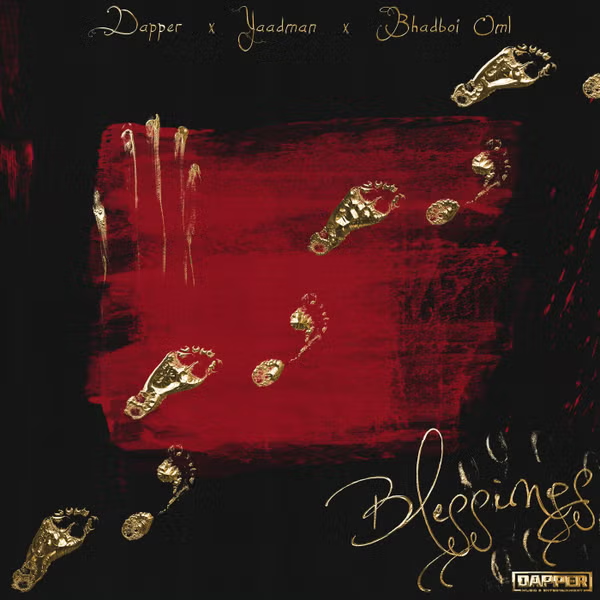Some residents of the twin Congolese capitals of Brazzaville and Kinshasa have long been known for their love of stylish dressing – in particular members of the Society of Ambience-Makers and Elegant People (Sape).
The word sapeur derives from the French acronym ‘SAPE’, short for ‘Société des Ambianceurs et des Personnes Élégantes’, and the term refers to Congolese men who take pride in dressing in stylish, elegant and colourful clothing.
The aesthetic is defied by suave suits, silk ties, bowler hats and sometimes even monocles, taking cues from the dandyish clothing worn in the French salons of the 1920s, and updating the look with bold colours and patterns that characterise the traditional ‘Liputa’ styles of the Democratic Republic of the Congo.
The Congo Dandies: Living In Poverty And Spending A Fortune To Look Like A Million Dollars
Unlike many fashion trends where only the rich can afford to keep up to date, Sapeurism is associated with hard-working middle-class men who are happy to save up their well-earned francs to afford these expensive outfits.
The subculture is heavily influenced by 18th- and 19th-century dandyism, which saw many British and French middle-class men place particular focus on their dress, posture and language in an attempt to appear of a higher class.
While it may seem somewhat shallow in retrospect, at the time, it was seen by many as a sign of taking control of their destinies, and it is this meaning that seems to resonate with the Congolese.
Sapeurism focusses on creativity and the individual, and aims to bring joy and fun to communities. The sight of these
luminously coloured outfits also helps give hope to many residents, as Tom Downey of The Wall Street Journal was told by one Sapeur: “The Sapeurs can only exist in peacetime. […] To me, they’re a sign of better things: stability, tranquillity.
In both Brazzaville and Kinshasa, these impeccably dressed men walk as if they were works of art. Congo dandyism centres on style, colour composition and attitude, and these factors are just as important as the brands being worn.
The subculture is also defined by specific rules regarding exclusivity, codes of honours and morality. Award-winning Italian photographer Daniele Tamagni provided a unique insight into this subculture in his photography book Gentlemen of Bacongo (2009).
Congo’s sapeurs are now passing their style on to a new generation with the son of famous sapeur Fiston Mahata, eight-year-old Natan, representing the new generation of style.
Across the River Congo in Brazzaville, 10-year-old Okili Nkoressa, middle, uses the dirt roads as his catwalk. “My favourite item of clothing is my Yves Saint Laurent suit which I am wearing today,” he says.
He is accompanied by veterans of the Sape scene, 52-year-old businesswoman Ntsimba Marie Jeanne, left, and 39-year-old
policewoman Judith Nkoressa, right.
Severin Mouyengo’s father was also a sapeur. “I Sape every day. It makes me forget about everything,” says the 62-year-old retired forester.
“It brings peace and tranquillity to everyone… I don’t see how anyone in La Sape could be violent or fight. Peace means a lot to us.”
Elie Fontaine, a 45-year old taxi-owner says he started dressing in suits as a child in 1982. “They used to tell us that Sape was just a form of ‘juvenile delinquency’.”
They gained international fame in 2014 when their style was featured in a Guinness advert.
“For me Sape is an art, Sape is a discipline, Sape is a job” says Maxime Pivot Mabanza, who has been a sapeur for 36
years.
Perreira Franchisco, a 37-year-old computer consultant in Brazzaville, calls himself “the greatest sapeur”.
“I will now demonstrate, what is known as a clothing equation with 2 or 3 elements. So I will be wearing a Kenzo suit, made in Italy, with a backless vest by Jean Basinga, I’ll wear a tie blue, white, red by Pierre Cardin and a pair of varnished tectonic shoes by John Foster. I love wearing my Kenzo suit – made in Italy!”
More and more women are joining the dapper dressers, including 44-year-old businesswoman Ella Kiadi who started eight years ago.
The women in the club are known as sapeuses.
Some women started decades ago, including 52-year-old housewife Clementine Biniakoulou, who has been a sapeuse for 36 years.
Human resources manager Basile Gandzion, 51, has been a sapeur for 30 years.
“Out of all my clothes my favourite item of clothing is my hat,” says 58-year old bricklayer Yamea Bansimba. He has been a sapeur for 50 years.
“Jika is here. The clothes inspector, I have arrived, all the labels are here. A Y3 skirt, Zara and other labels, crocodile shoes, 40 cm socks, do you feel me. I am here, Jika the Parisian,” is how 28-year-old Serge Bakama Boke – aka Jika – introduces himself.
At just five years old, Israell Mbona (right) has been a sapeur for three years. Even at his young age, his kilt is from Scotland and his shoes are Versace.
























